Explainer: Sprites, jets, ELVES and other storm-powered lights
A variety of “transient luminous events” flash in the skies above intense thunderstorms
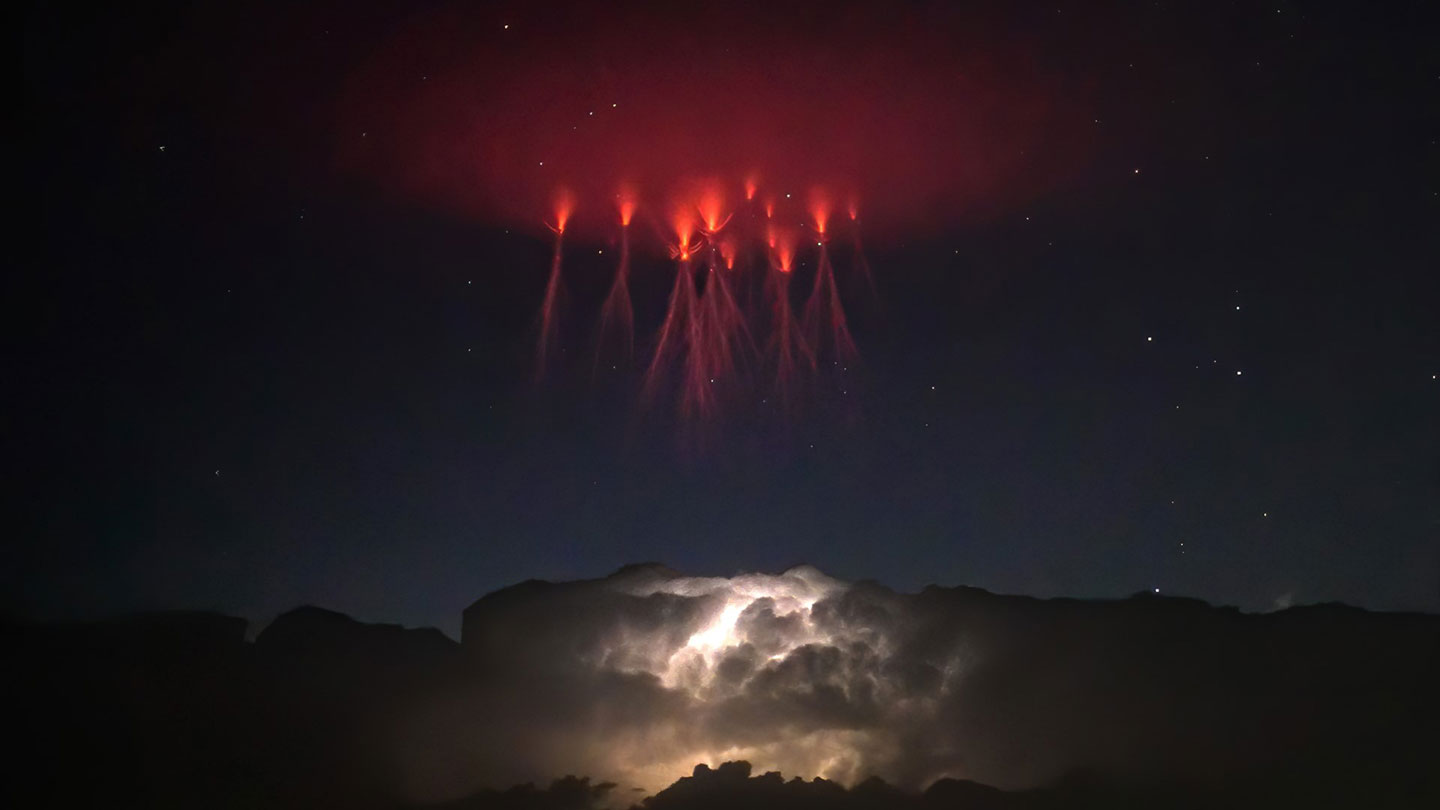
Huge, tendril-like red glows called sprites briefly appear in the sky above some powerful thunderstorms.
Paul Smith
Paul Smith recalls the first time he captured a sprite. He was shocked.
It was the summer of 2017. Smith had gone out to California’s Mojave Desert to photograph a meteor shower. While driving, “I thought I saw sprites out of the corner of my eye,” he says. “Just flashes on the horizon.”
These sprites were no fairytale creatures. They’re jagged, blood-red glows that sometimes appear above powerful thunderstorms.
While setting up to view the meteors, Smith aimed one camera at the distant storm — on the chance there really were sprites there. “After about an hour, I caught this one sprite,” he says. Its glow was just a crimson smear on his camera. “But once I saw it, I immediately knew what it was. And I was just in complete and utter disbelief.”
Since then, Smith has tried to capture as many sprites as he can. “They’re like snowflakes,” he says. “No two are the same.”
Based in Edmond, Okla., Smith has now documented thousands of sprites. He’s also caught more than a hundred blue jets, dozens of green ghosts and several ELVES. All are types of mysterious, fleeting lights that flicker in the skies above large storms. Together, they’re known as transient luminous events — TLEs, for short.
“The tops of thunderstorms are really active,” says Steven Cummer. He’s an electrical engineer who studies TLEs at Duke University in Durham, N.C. “There’s a lot of stuff going on there. But it’s hard to see.”
At least, it’s hard to see from the ground beneath a storm. But photos taken by citizen scientists like Smith, as well as data collected by airplanes and the International Space Station, have unveiled details about these strange lights that lurk above strong storms.
Sprites
Sprites were the first TLEs known to science. Tales of eerie lights dancing over storms date back centuries. But it wasn’t until 1989 that researchers caught one on video. It happened by accident. Scientists at the University of Minnesota had been testing a camera for an upcoming rocket mission.
Sprites are mostly reddish, but their lower edges can be tinged with blue. And they can sport both diffuse plumes and brighter tendrils of light. Sometimes, their structures are said to resemble carrots or jellyfish. A single sprite can stretch from some 40 to 80 kilometers (25 to 50 miles) off the ground. The clouds that spawned it, meanwhile, may be only around 15 kilometers (9 miles) high.
Despite their size, sprites are so dim and quick — lasting mere thousandths of a second — that they’re hard to spot without sensitive cameras at night.
“They are caused by intense cloud-to-ground lightning,” says Ningyu Liu. This physicist studies TLEs at the University of New Hampshire in Durham. “Lightning flashes can move charge from the cloud to the ground,” Liu explains. That transfer of electric charge can create a large electric field around the lightning strike.
High above a storm cloud, the air is thin enough that this field can cause an electrical discharge. That’s a flow of electric current through the atmosphere — sort of like the discharges that make up normal lightning. Those discharges can excite molecules in the air to give off light. Near the tops of sprites, that light mainly comes from nitrogen molecules that throw off red light. Near the bottoms of sprites, the light is dominated by nitrogen molecules and ions giving off blue light.
“If you look at a sprite and you really zoom in, then you can see it has very complex structure,” Liu says. “It is made of many, many small filaments.” Liu and others are working to understand how that complex network of light threads form.
Jets
In 1994, two airplanes spotted a second type of TLE by surprise. They had been dispatched to observe sprites above storms moving through the U.S. Midwest. The new TLE came to be known as a blue jet. This cone-shaped fountain of light erupts from the tops of storm clouds.
Blue jets are basically just lightning strikes that zip upward from their clouds, rather than down.
In the stratosphere, their electricity excites nitrogen to glow blue, giving the jets their signature hue. Jets typically reach from cloud tops — around 15 kilometers (9 miles) high to some 30 to 40 kilometers (20 to 25 miles) high. Small jets that stretch just a few kilometers above their clouds are known as “blue starters.” More powerful versions reach altitudes of about 80 kilometers (50 miles) and are aptly known as “gigantic jets.”
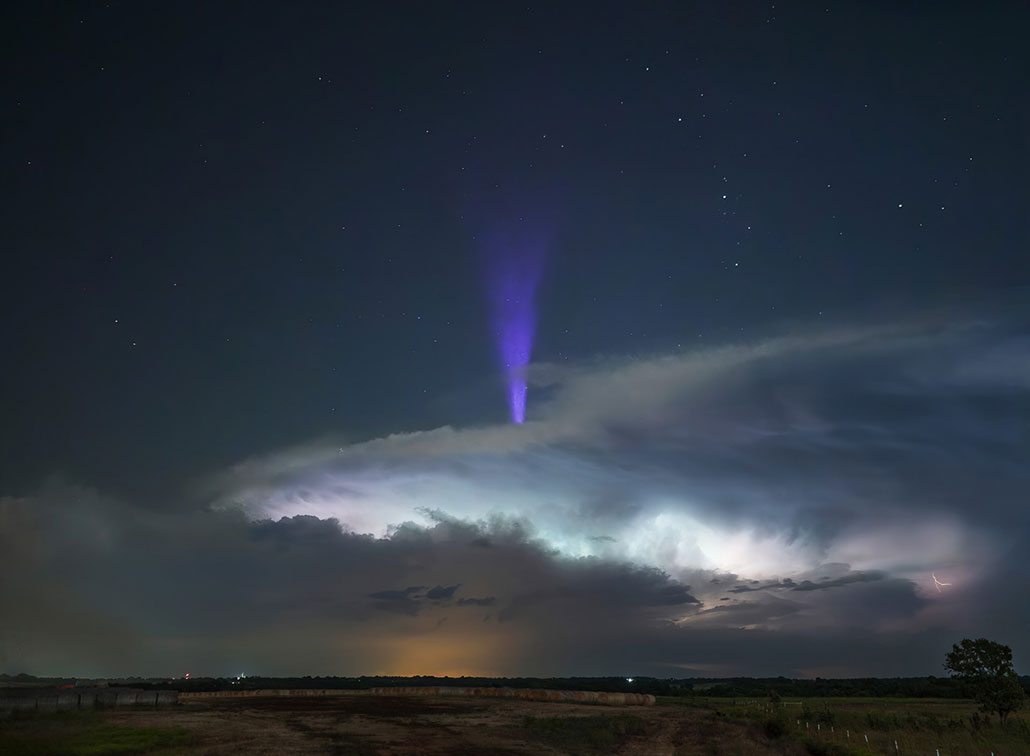
Gigantic jets are quite rare. They seem to be more common in the tropics. In fact, this is the first type of TLE witnessed by Frankie Lucena, a citizen scientist based on Cabo Rojo, Puerto Rico. It happened while he was watching a storm in September 2010.
“There were many flashes of lightning, and all of a sudden, I see a bolt rising from the cloud top,” Lucena says. “It looked like it was on fire.”
Indeed, gigantic jets are often tipped with red ends. That’s because they have reached the high altitudes where nitrogen glows red rather than blue. (This is the same reason sprites are red on top, blue on the bottom.) “I was in such awe that my eyes watered up,” Lucena recalls. He has since captured many gigantic jets, sprites and other TLEs over storms and even hurricanes.
In 2021, researchers shared that instruments on the space station had offered the first clear view of the spark that set off a blue jet. It was a blue burst of electricity near a cloud top that lasted just 10 millionths of a second. Space-station cameras have since revealed that thundercloud tops are constantly crackling with such blue sparks.
“They’re called corona discharges,” says Torsten Neubert. He studies atmospheric physics at Technical University of Denmark in Kongens Lyngby. “The tops of these clouds, they’re sizzling,” he says. And sometimes those sizzles spark blue jets.
ELVES, ghosts and other weird glows
The 1990s also brought the discovery of a third type of TLE: ELVES. Their name is an acronym. It’s short for “emission of light and very low frequency perturbations due to electromagnetic pulse sources.” But we’ll just stick with ELVES.
ELVES appear as fast-expanding rings of light around 90 kilometers (55 miles) off the ground. They can grow to be hundreds of kilometers wide and vanish in less than a thousandth of a second.
“ELVES are a little bit hard to capture on regular video because they’re so fast,” Cummer says. “You sometimes need specialized equipment to be able to capture them.”
Light heights
This diagram shows how high in the atmosphere different types of TLEs are. Blue jets shoot straight out of storm clouds, generally reaching around 40 kilometers (25 miles). Gigantic jets can reach higher. Sprites and ELVES, meanwhile, are electrical phenomena triggered by lightning strikes that appear at much higher altitudes and away from the storm clouds that spawned them.
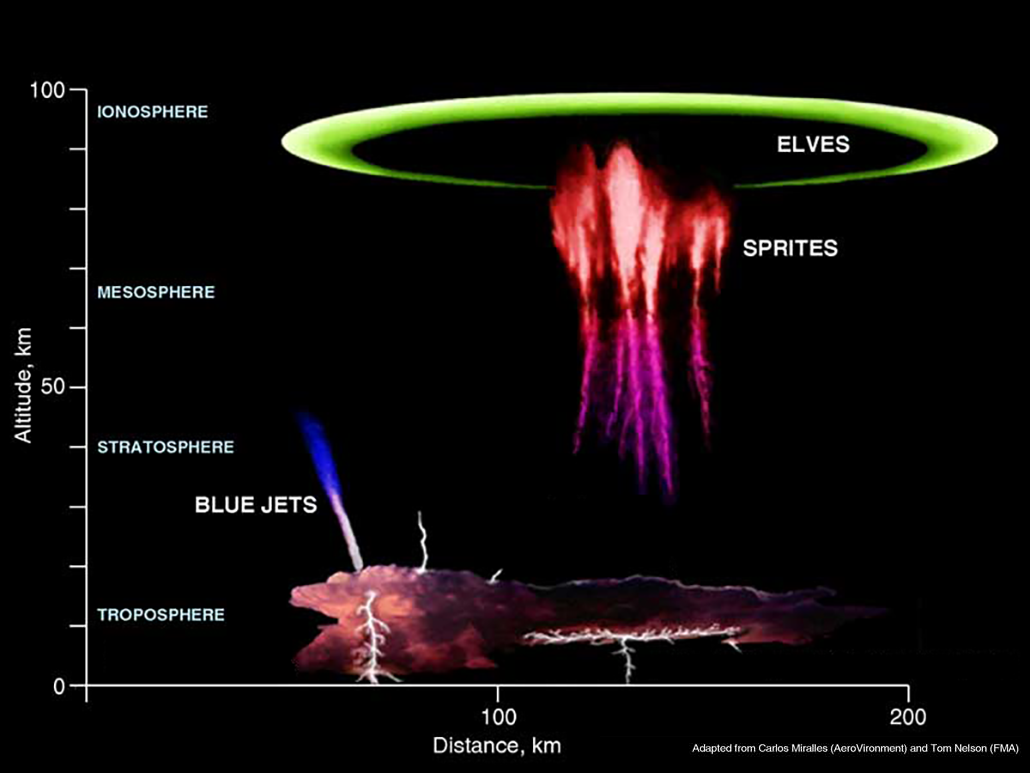
Like sprites, ELVES are triggered by intense lightning strikes. “A very powerful lightning discharge generates this very [strong] electromagnetic pulse,” says Cummer. That pulse is shaped like a sphere and expands outward from the lightning strike. In the atmosphere, 80 to 90 kilometers (50 to 55 miles) off the ground, that pulse can energize electrons to smash into nitrogen atoms. This makes the nitrogen glow red.
But the pulse can only generate that light in this one thin slice of the atmosphere, Cummer says. That’s why an ELVE looks like a ring, rather than a sphere of light. As the spherical pulse expands, it cuts a wider and wider circle through that specific layer of the atmosphere where it can cause nitrogen to glow.
Among TLEs, “ELVES are definitely the best understood,” Cummer says. But citizen scientists and researchers are still finding new types of TLEs to investigate.
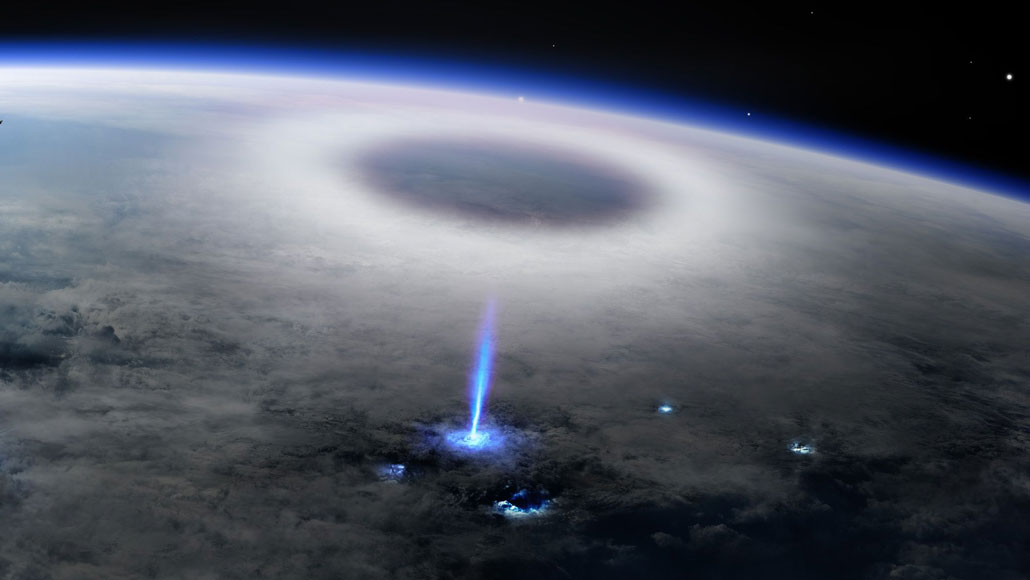
In 2019, a citizen scientist discovered a spooky green glow haunting the sky above a sprite he’d filmed. Smith, Lucena and other photographers later found similar glows. These green flashes came to be known as ghosts. The name is an acronym for “green emissions from excited oxygen in sprite tops.” These ghosts go “boo” for mere milliseconds at a time.
Just last year, scientists discovered which elements in the atmosphere make ghosts glow. Some of the light comes from oxygen. This is the same element that paints some auroras green. But tiny bits of iron and nickel were also found to cause some of ghosts’ glow. Those airborne crumbs probably come from bits of space dust hitting Earth’s atmosphere.
Why study TLEs?
Citizen-science observers can make a big difference in TLE research, Cummer says. “They’re very good at knowing what storms to watch and which ones are doing interesting things.” The discovery of ghosts by citizen scientists is proof of that. Lucena’s observations have also helped researchers study hurricane-sparked sprites.
NASA recently launched the Spritacular citizen-science project. It aims to collect more observations of TLEs for study.
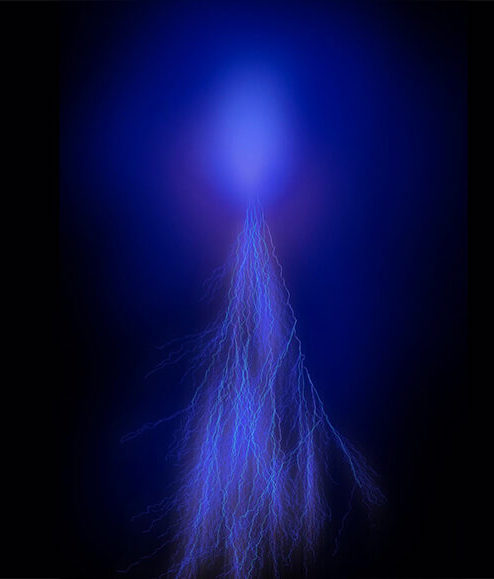
Getting a better look at the tops of storm clouds could help reveal what goes on inside their dark, hidden depths, says Neubert in Denmark. Take the sizzles that his team has seen sparking blue jets. “We’re most sensitive to the top of the cloud, because we see it from above,” he says. “But likely, [these sparks] occur many places inside the cloud.” If so, these blue crackles could be linked to the origins of normal lightning, too.
“People are also studying the impact of sprites, jets or ELVES on the middle and upper atmosphere,” Liu says. Such energetic events can alter the chemical and electrical properties of the air around them. And that, in turn, can affect how radio signals travel through the air. They might even play a role in Earth’s climate. That’s why scientists want to better understand the role of TLEs on their atmospheric environment.
“We know, I would say, surprisingly little about what happens at the top of thunderstorms and in the atmosphere above,” Neubert says. But new observations are continually chipping away at the mysteries surrounding TLEs.
These discoveries may not only offer insights into weather on Earth but also help explain curious lights seen flickering above storms on other planets.







